September 20…..Valley of the Kings
After a wonderful night's sleep in our luxurious cabin on the riverboat, we awoke to a beautiful day and, after a plentiful breakfast, went to visit the Valley of the Kings
. Standing on the west bank of the Nile, opposite Thebes (modern Luxor) it consists of two valleys, the East Valley, where the majority of the royal tombs are situated, and the West Valley. Towering above the Theban Hills is the mountain, al-Qurn. With its pyramid-shaped appearance, it is probable that this echoed the pyramids of the Old Kingdom, more than a thousand years prior to the first royal burials carved here, and is one of the reasons why this site was chosen as the burial ground for most of Egypt’s New Kingdom rulers. The valley is known to contain 63 tombs and chambers ranging in size from a simple pit, to a complex tomb with over 120 chambers. For nearly 500 years, from the 16th to the 11th century BC, it was the principle burial place of the major royal figures of the Egyptian New Kingdom, as well as a number of privileged nobles. The royal tombs are decorated with scenes from Egyptian mythology and give clues to the beliefs and funerary rituals of the period. Unfortunately, when they were excavated, most of the tombs had already been plundered. Although there was no evidence remaining of their precious contents, the tombs, as well as the vivid carvings on the walls, many with their original colors, remain very well preserved due to the dry climate on the west bank of the NIle.
The Temple of Hatshepsut, that marks the entrance to the Valley of the Kings, was the first temple that we visited. This is not only a memorial temple that honors Queen Hatshepsut, it is also one of the greatest Egyptian architectural achievements and closely resembles the classical Greek architecture of 1,000 years later
.
Hatshepsut was the fifth pharaoh of the eighteenth Dynasty of Egypt and was the second historically confirmed female pharaoh, coming to the throne of Egypt in 1487 BC. She is generally regarded by Egyptologists as one of the most successful pharaohs, reigning longer than any other woman of an indigenous Egyptian dynasty and, according to Egyptologist, James Henry Breasted, is also known as "the first great woman in history of whom we are informed."
Mondoo told us the fascinating history of Hatshepsut as we walked up the 100-foot causeway leading to the three levels of the Temple. It’s believed that, in ancient Egyptian times, the causeway was probably lined with sphinxes and the first level was filled with exotic trees and shrubbery acquired on Hatshepsut’s many trading expeditions to the “Land of Punt," an exotic country on the Red Sea coast. Her expeditions are depicted in the beautiful relief sculpture within Hatshepsut’s temple and, also, recount the tale of the divine birth of a female pharaoh, the first of its kind
. Unfortunately, after her death many of the statues and ornamentation were destroyed. Nonetheless, the stark Temple of Hatshepsut is magnificent. Photos were not allowed to be taken inside the tombs in the Valley of the Kings but our guide paid the security person, stationed at each of the tombs, a small fee to take a few photos for us.
The Valley of the Kings has been a focus of archeological and Egyptological exploration since the end of the eighteenth century. In modern times the valley has become famous for the discovery of the tomb of Tutankhamun, the incredible contents of which we saw at the Cairo Museum. This discovery has made the Valley of the Kings one of the most famous archaeological sites in the world and, in 1979, it became a World Heritage Site along with the rest of the Theban Necropolis.
We visited three more tombs that all had extensive tunnels and large chambers, where all of the personal items were placed, to be used in the afterlife to make the pharaoh comfortable. The deepest and longest descending corridor to the entrance was the tomb for King Twosret. The numerous side chambers were filled with religious and mythical figures and writings, and, like in the Temple of Hatshepsut, we were able to have the security guard take a few photos.
After we finished touring the Valley of the Kings, Mondoo took us to a small factory that used some of the ancient techniques to produce beautiful utilitarian pieces made from a variety of stones like alabaster, limestone, granite and travertine
. We watched a demonstration of how a bowl is made and then were invited (of course) into the showroom where we were served tea while we looked at all the bowls, vases, glasses, plates and many more pieces that are made at the factory. They really were irresistible and we ended up buying a set of little glasses and a small bowl.
We, then, returned to the riverboat for our buffet lunch before setting off down the Nile to the next site that we would visit in the morning. After lunch, we went up to the top pool and bar deck where we had a terrific view of the banks on both sides of the Nile. While we were enjoying a cool drink and visiting with a group of young Malaysian women, who were all attending medical school in Cairo and were on holiday, a small boat pulled up next to the huge riverboat hawking their wares. Even if someone on the boat wanted to buy one of the decorative towels they were offering, I have no idea how on earth they would have gotten the wares onto the boat. As we cruised down the Nile we passed by clusters of block shaped houses and buildings that blended into the desert sands, as well as narrow strips of trees and lush grenery, flanked by the river on one side and the hills of the desert on the other. Behind the hills, the desert stretched for as far as the eye could see.
As evening approached, we passed through the locks going from Luxor to Edfu, located above the lower dam of the Nile River. Soon after, we docked for the evening, enjoyed our dinner, then turned in for the night.
VALLEY OF THE KINGS
Tuesday, September 20, 2016
 Luxor, Luxor, Egypt
Luxor, Luxor, Egypt
Other Entries
-
30WALKING TOUR IN BRASOV
Aug 2724 days prior Brasov, Romaniaphoto_camera18videocam 0comment 0
Brasov, Romaniaphoto_camera18videocam 0comment 0 -
31ALL I CAN SAY IS.....BIZARRE
Aug 2823 days prior Sacele, Romaniaphoto_camera18videocam 0comment 2
Sacele, Romaniaphoto_camera18videocam 0comment 2 -
32PHOTO JOURNAL OF OUR SACELE HOME EXCHANGE
Aug 2922 days prior Săcele, Romaniaphoto_camera18videocam 0comment 5
Săcele, Romaniaphoto_camera18videocam 0comment 5 -
33VISITING THE LOVELY TOWN OF SINAIA
Aug 3021 days prior Sinaia, Romaniaphoto_camera26videocam 0comment 1
Sinaia, Romaniaphoto_camera26videocam 0comment 1 -
34OCTOBERFEST, SIGHISOARA THEN THE BLACK SEA
Aug 3120 days prior Sighisoara, Romaniaphoto_camera39videocam 0comment 3
Sighisoara, Romaniaphoto_camera39videocam 0comment 3 -
35ANOTHER COUNTRY, ANOTHER HOME EXCHANGE
Sep 0218 days prior Kosharitsa, Bulgariaphoto_camera29videocam 0comment 2
Kosharitsa, Bulgariaphoto_camera29videocam 0comment 2 -
36THE ENCHANTING VILLAGE OF SOZOPOL
Sep 0416 days prior Sozopol, Bulgariaphoto_camera34videocam 0comment 4
Sozopol, Bulgariaphoto_camera34videocam 0comment 4 -
37WE'RE ON OUR OWN
Sep 0614 days prior Sveti Vlas, Bulgariaphoto_camera12videocam 0comment 2
Sveti Vlas, Bulgariaphoto_camera12videocam 0comment 2 -
38LAST FEW DAYS IN EASTERN EUROPE
Sep 0713 days prior Sveti Vlas, Bulgariaphoto_camera21videocam 0comment 6
Sveti Vlas, Bulgariaphoto_camera21videocam 0comment 6 -
39MYSTERY OF THE MISSING LUGGAGE
Sep 1010 days prior Istanbul, Turkeyphoto_camera5videocam 0comment 1
Istanbul, Turkeyphoto_camera5videocam 0comment 1 -
40SENSORY OVERLOAD
Sep 119 days prior Istanbul, Turkeyphoto_camera31videocam 0comment 9
Istanbul, Turkeyphoto_camera31videocam 0comment 9 -
41TAKSIM SQUARE AND THE POTATO SEARCH
Sep 128 days prior Istanbul, Turkeyphoto_camera34videocam 0comment 3
Istanbul, Turkeyphoto_camera34videocam 0comment 3 -
42MAYBE THIS IS WHAT IT LOOKS LIKE ON THE MOON
Sep 137 days prior Nevsehir, Turkeyphoto_camera29videocam 1comment 6
Nevsehir, Turkeyphoto_camera29videocam 1comment 6 -
43DAY TWO - CAPPADOCIA
Sep 146 days prior Nevsehir, Turkeyphoto_camera32videocam 0comment 5
Nevsehir, Turkeyphoto_camera32videocam 0comment 5 -
44LAST TWO DAYS IN ISTANBUL
Sep 155 days prior Istanbul, Turkeyphoto_camera29videocam 0comment 3
Istanbul, Turkeyphoto_camera29videocam 0comment 3 -
45CAIRO AND OUR FABULOUS NILE RIVER CRUISE
Sep 173 days prior Cairo, Egyptphoto_camera24videocam 0comment 5
Cairo, Egyptphoto_camera24videocam 0comment 5 -
46OUR NILE EXCURSION CONTINUES
Sep 191 day prior Luxor, Egyptphoto_camera35videocam 0comment 6
Luxor, Egyptphoto_camera35videocam 0comment 6 -
47VALLEY OF THE KINGS
Sep 20 Luxor, Egyptphoto_camera34videocam 0comment 8
Luxor, Egyptphoto_camera34videocam 0comment 8 -
48EDFU AND KOM OMBO
Sep 211 day later Aswān, Egyptphoto_camera36videocam 0comment 5
Aswān, Egyptphoto_camera36videocam 0comment 5 -
49OUR LAST FULL DAY ON THE NILE EXCURSION
Sep 222 days later Aswān, Egyptphoto_camera32videocam 0comment 4
Aswān, Egyptphoto_camera32videocam 0comment 4 -
50THE AIRPORT FIASCO
Sep 233 days later Addis Ababa, Ethiopiaphoto_camera23videocam 0comment 4
Addis Ababa, Ethiopiaphoto_camera23videocam 0comment 4 -
51THE MESKEL FESTIVAL
Sep 266 days later Addis Ababa, Ethiopiaphoto_camera29videocam 4comment 1
Addis Ababa, Ethiopiaphoto_camera29videocam 4comment 1 -
52THE ASTOUNDING CHURCHES OF LALIBELA
Sep 288 days later Lalibela, Ethiopiaphoto_camera42videocam 0comment 2
Lalibela, Ethiopiaphoto_camera42videocam 0comment 2 -
53OUR NEW SON
Sep 299 days later Lalibela, Ethiopiaphoto_camera39videocam 1comment 4
Lalibela, Ethiopiaphoto_camera39videocam 1comment 4 -
54BACK TO ADDIS ABABA
Sep 3010 days later Addis Ababa, Ethiopiaphoto_camera30videocam 3comment 2
Addis Ababa, Ethiopiaphoto_camera30videocam 3comment 2 -
55FINALLY.....THE ANIMALS!!!!
Oct 0313 days later Nairobi, Kenyaphoto_camera51videocam 2comment 6
Nairobi, Kenyaphoto_camera51videocam 2comment 6 -
56MORE SAFARI THEN BACK TO NAIROBI
Oct 06381 days later Lake Nakuru National Park, Kenyaphoto_camera35videocam 0comment 1
Lake Nakuru National Park, Kenyaphoto_camera35videocam 0comment 1 -
57FABULOUS HOME EXCHANGE IN DEBASO, KENYA
Oct 09384 days later Malindi, Kenyaphoto_camera29videocam 0comment 5
Malindi, Kenyaphoto_camera29videocam 0comment 5 -
58UNWINDING IN PARADISE
Oct 10385 days later Watamu, Kenyaphoto_camera25videocam 0comment 3
Watamu, Kenyaphoto_camera25videocam 0comment 3 -
59THE GEDI RUINS
Oct 12387 days later Gede, Kenyaphoto_camera12videocam 0comment 0
Gede, Kenyaphoto_camera12videocam 0comment 0
Comments
2025-05-22
Comment code: Ask author if the code is blank

 Luxor, Luxor, Egypt
Luxor, Luxor, Egypt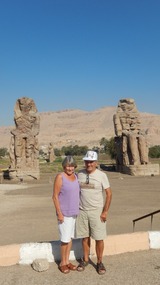
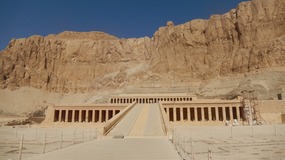
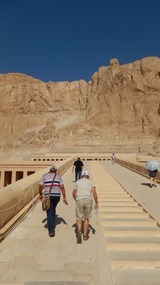
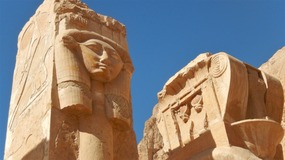








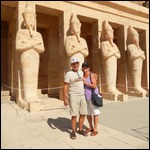
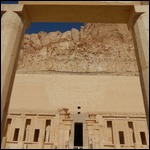











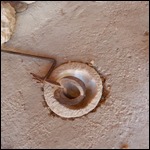











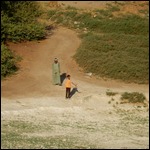


Dave Colson
2016-11-20
Fabulous description guys - feel like I'm right there with you
Nancy - Red
2016-11-22
Looks very uncrowded. You picked a good time to go. Red
Nancy - Red
2016-11-22
Looks very un-crowded. You picked a good time to go. Red